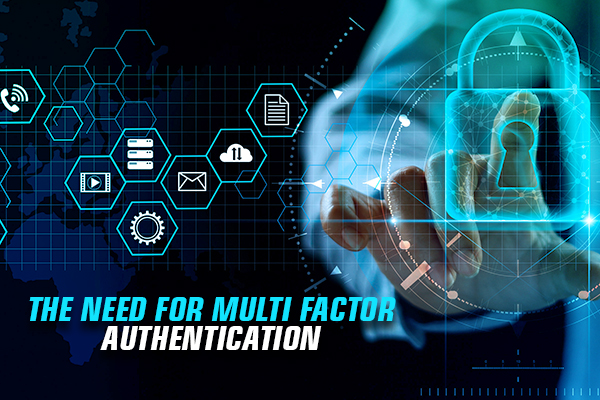Having more than one way to sign in can be a hassle. Multi-factor authentication (MFA) helps reduce the inconvenience by providing an additional layer of security. The good news is that multi-factor authentication is affordable and easy to implement. Learn more about the benefits of MFA. Here are a few. Read on to learn how it works and how it can benefit your company. And remember, there are other benefits to MFA, too.

Multi-factor authentication is a form of risk-based authentication
Multi-factor authentication is a form of security that uses multiple pieces of evidence to verify a digital user’s identity. While passwords and usernames are easy to guess or steal, two-factor authentication has the added benefit of providing a higher level of security. Biometrics, for instance, make it much more difficult for hackers to guess or steal. Consequently, using multi-factor authentication improves security and minimizes the ripple effect of compromised credentials.
In addition to passwords, multi-factor authentication can include other types of biometric information, such as fingerprints or retina scans. This method is especially useful for social networking sites, which tend to collect a wealth of data on users. Likewise, social networks are a popular target for online criminals. Some users may be concerned about sharing login information with these sites. Adaptive multi-factor authentication combines adaptive authentication and risk-based authentication, a technique that helps reduce redundant logins and makes the workflow easier for users. Multi-factor authentication is a valuable time-saving tool. However, it requires special IT expertise to implement.
It provides an extra layer of security
With more organizations moving toward digitization, they have greater liability for storing customer data. Because of this, attackers take advantage of this vulnerability by exploiting user login data. In order to protect these data, verifying user identity is crucial. Traditional username and password authentication is unreliable and inefficient. Users may be confused about which passwords to use for multiple services or reuse them without changing their complexity. Moreover, passwords offer weak security and can be easily stolen through hacking, malware, phishing, or other means.
With multi-factor authentication, users and organizations receive an extra layer of security. Cybercriminals can no longer guess the password without an extra factor, such as a mobile phone. Instead, they have to remember both the password and the unique smartphone number. These two factors are not the same, but they do help ensure that users are who they say they are. In addition to adding another layer of security to the system, multi-factor authentication helps in building trust with users.
It is easy to implement
MFA is a simple way to ensure the authenticity of your user account. Its implementation requires two separate pieces of authentication evidence. One of these pieces of evidence may be a password. The second piece of authentication evidence may be a hardware token or even your personal mobile phone. A successful defense against an attack can pay for the cost of the MFA solution in a few months. If you’re considering MFA for your organization, don’t delay – it is an important investment for your company’s security.
It requires several types of authentication, including a digital certificate, OTP core, or a phone number that you can send SMS. You can also use a new hardware token, a support team verification, or a trusted user’s vouch. MFA is very easy to implement and requires little programming on the part of developers. Unlike traditional multi-factor authentication, you don’t need to invest in any specialized hardware or integration to implement this feature.
It is cost-effective
As businesses look for ways to secure their network, the first question is whether or not multi-factor authentication is cost-effective. The answer to this question will vary widely depending on your specific needs. Some solutions may require specialized hardware, and you’ll need to pay for the hardware itself as well as for shipping and help desk support. Others require no additional up-front cost, but they can add up quickly. It is also important to consider whether MFA will affect your business in a way that will not disrupt its operations.
Regardless of the solution you choose, the initial investment will be a significant part of the overall cost. Multi-factor authentication solutions typically include a number of components and devices. A managed service usually offers a flat monthly or annual cost for each enrolled user. Additional devices, integrations, and factor methods may incur additional charges. Some solutions provide a combination of the two. However, you should look for a service that offers flexibility and ease of use, so you can scale up or down as your business grows.
It is location-based
Multiple-factor authentication (MFA) is a technique that uses one or more external authentication factors to ensure that only authorized users have access to a network. Depending on the type of authentication, a single factor can be physical, such as the user’s location. Location-based MFA has many benefits, Users can authenticate themselves at the website by entering their location, rather than providing an email address or password.
Multi-factor authentication requires the use of two or more verification factors, such as password and a user’s biometrics, to ensure that the user is who they say they are. Location-based MFA can be especially helpful, since it can verify the user’s current location if it is different from the one specified in the system. Moreover, businesses have come to rely on cloud applications to increase efficiency and productivity through remote working.